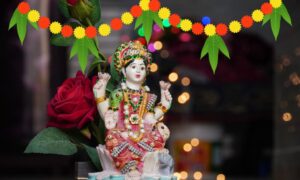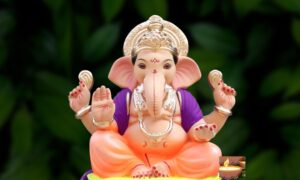For the Jain community, Rohini Vrat is one of the most auspicious festivals. Jain communities all throughout the world lavishly and wildly commemorate this auspicious day. In Jainism and Hinduism, Rohini is one of the 27 Nakshatras. The goal of fasting on this day for adherents of the Jain faith is to achieve wealth, peace, and happiness. On this day, it is thought that fasting can release a person from all types of pain, sorrow, and unhappiness. Given the importance of fasting during the Rohini Vrat, the Rohini Nakshatra gets its name. When we get ready to commemorate this auspicious day, have the following points in mind.
Significance of Rohini Vrat
Because Rohini Vrat is associated with Rohini Nakshatra, one of the 27 nakshatras in Vedic astrology, it has particular significance in Hindu culture. This Vrat, according to Hindu mythology, is connected to Lord Krishna and is only observed when Rohini Nakshatra becomes stronger after sunrise. However, are you aware of the intriguing aspect? Twelve or thirteen times a year, people observe Rohini Vrat, which is observed roughly every 27 days!
Women follow this day-long fast, which has particular meaning in the Jain community, in hopes of their husbands living long lives and for a happy and healthy marriage. On the other hand, a person adhering to the customs and traditions is expected to keep up the fast for three, five, or seven years. According to tradition, followers are required to perform a Udyapan rite to mark the end of their fast. A person who observes the Rohini Vrat eliminates all of his personal and professional issues. That is what keeping Rohini Vrat in 2024 will accomplish.

Rohini Vrat Benefits
As well as the family’s resident, Rohini Vrat is revered as the source of joy and wealth. It is practiced to wish the spouse a long life and to provide solace from everyday troubles. Furthermore, it is thought that people who observe the Rohini fast can eradicate all forms of destitution and suffering. In order to receive prosperity, wealth, and good fortune on this day, you might also schedule a puja. Stress, anxiety, despair, and rage can all be significantly reduced by performing puja on this day. A happy married existence is also enhanced by it.
Rules for Fasting and Vrat Vidhi
Three, five, or seven years can pass without a break during the Vrat. The most recommended duration of Vrat, which ends with the Udyapana, is five years and five months. The women who are keeping the fast get up early and take a holy bath on the day of Rohini Vrat. In the puja chamber, they arranged the idol of one of the twenty-four Tirthankaras, Bhagavan Vasupujya, on the altar. Subsequently, the idol undergoes intricate ceremonies that include bathing it in holy water and beautifying it with aromatic materials. After the Puja, the Prasad is finally served.
The fasting period begins after the puja and lasts till the sky is illuminated by the Margashirsha Nakshatra. When the Rohini Vrat is over, women can choose how long to observe it. A suitable Udyapana, or closing ritual, should be performed at the end of the fast. Some examples of such rituals are feeding the destitute and impoverished, going to the temple of Vasupujya, and performing charitable deeds.
Why is Rohini Vrat observed?
Secular spiritual pursuits are encouraged by Jainism. The general person is given some leeway in the spiritual rituals adhered to by the Jain society, whereas saints observe the intense regulations. Since it can be challenging for them to maintain stringent fasts, this Vrat facilitates the easy observation of spiritual discipline by the women in Jain households.
Husbands and close family members of women who practice the Rohini Vrat are blessed. The practice of fasting fosters inner peace, self-control, and patience. It assists with both self-control and overcoming all life’s challenges. They can foster understanding and moral principles among the families as a result.
The festival is often observed by the family’s ladies alone, although in certain homes, the whole family keeps the fast. The women honor Bhagavan Vasupujya and ask for blessings for the family on the day of Rohini Vrat. The women offer prayers for wealth and an improvement in their standard of living.
Rituals and Pooja for Rohini Vrat
The Vrat can be kept up for three, five, or seven years, but five years and five months, finishing with the Udyapana ceremony, is the most recommended duration. On this, women traditionally start their fast early in the morning by taking a holy bath. Intricate ceremonies involve bathing an idol of Bhagavan Vasupujya, one of the twenty-four Tirthankaras, in holy water and decorating it with scented compounds, all of which are set on the altar in the puja chamber.
Fasting is then observed until the rising of the Margashirsha Nakshatra after the pooja. The women who observe the Rohini Vrat decide how long it will last. The Vrat is finished with an appropriate Udyapana ceremony, which could involve visiting the temple of Vasupujya or carrying out charitable activities.

Yearly Dates of Rohini Vrat
| Dates |
| January 21, 2024, Sunday |
| February 18, 2024, Sunday |
| March 16, 2024, Saturday |
| April 12, 2024, Friday |
| May 10, 2024, Friday |
| June 6, 2024, Thursday |
| July 3, 2024, Wednesday |
| August 27, 2024, Tuesday |
| September 23, 2024, Monday |
| October 20, 2024, Sunday |
| November 17, 2024, Sunday |
December 14, 2024, Saturday |
Vrat Katha Rohini
In the kingdom of Champapura, the family of King Madhava and Queen Lakshmipati prospered; they had seven boys and one daughter, Rohini. In an attempt to discover the perfect match for Princess Rohini, King Madhava consulted a Gurudev who predicted her marriage to Ashoka, the prince of Hastinapur. Having chosen Prince Ashoka to be her life partner, Rohini arranged an opulent Swayamvara after accepting this prophecy. They had no idea that the tale of their joyful marriage would also be one of atonement and spiritual growth.





















